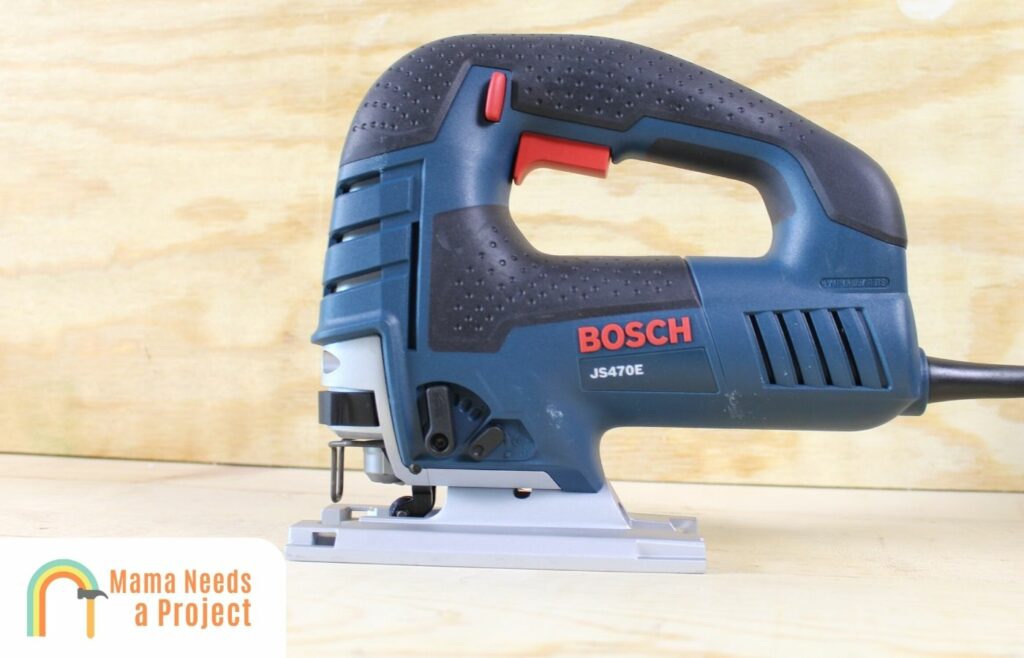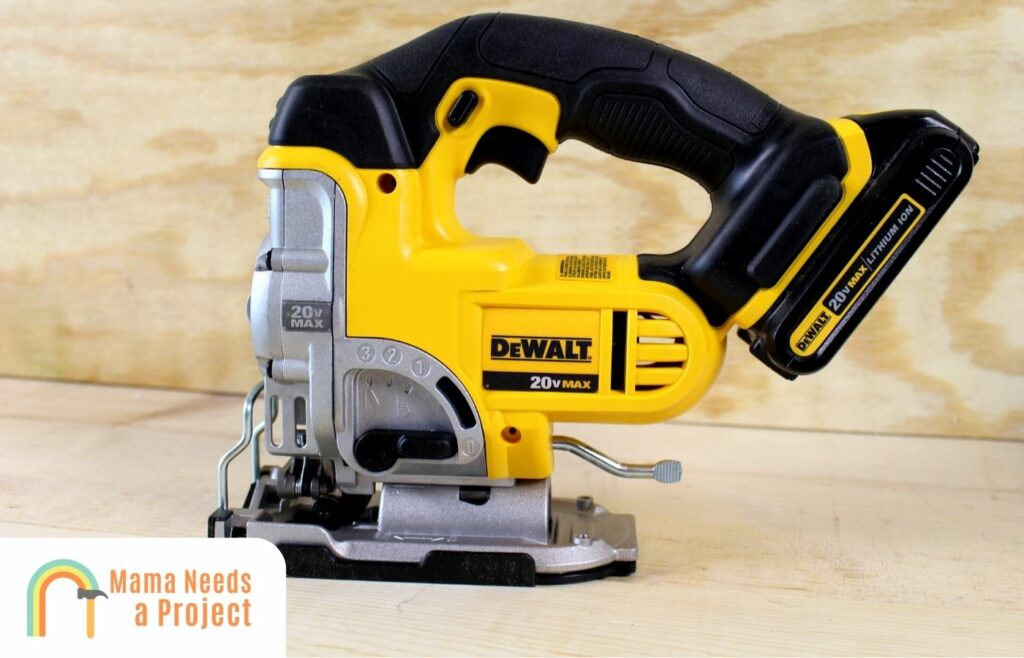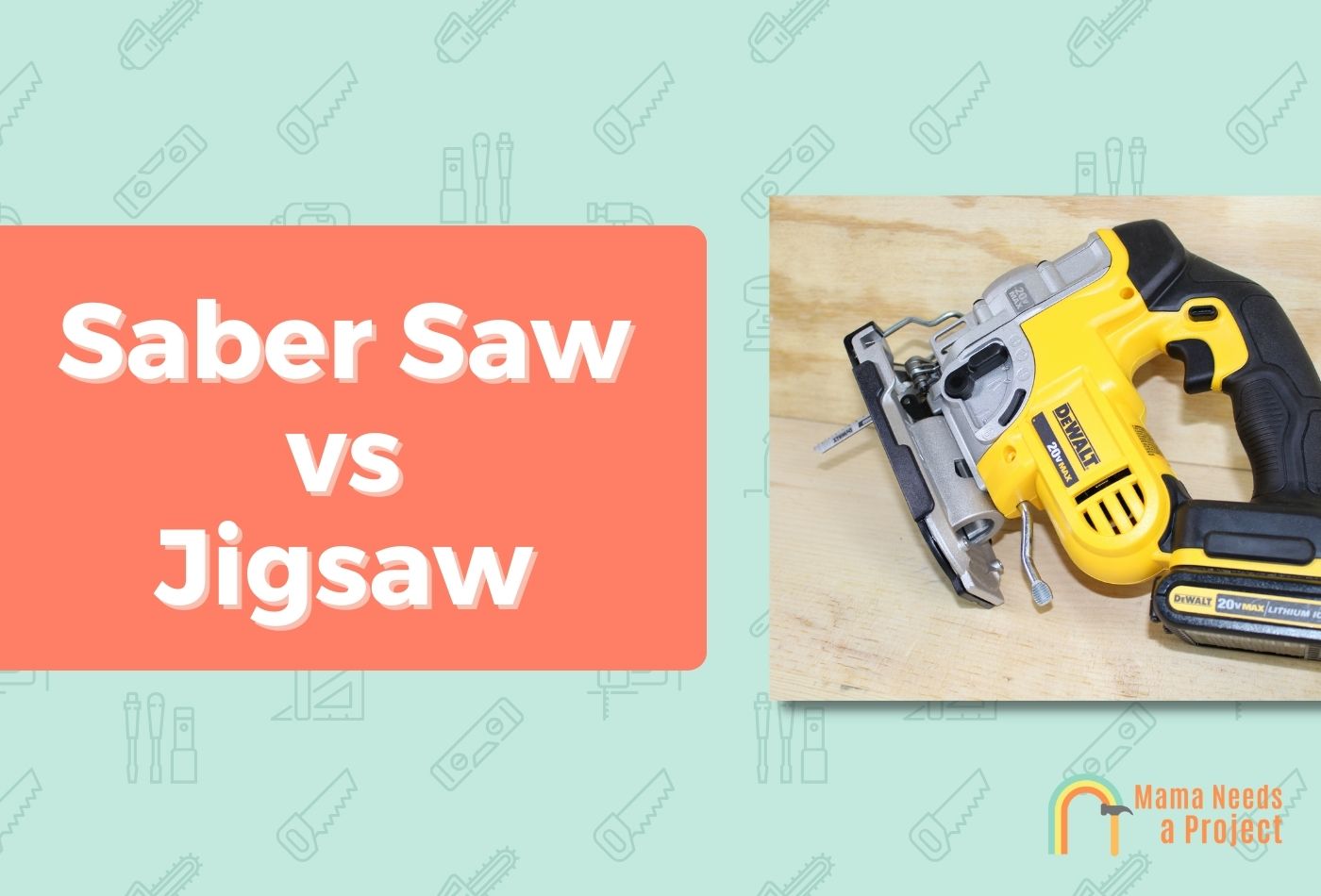Saber Saw vs Jigsaw (Which is Best?)
When it comes to woodworking, crafts, and carpentry, there’s a good chance you’ve come across both jigsaws and saber saws at some point or another.
While both are types of reciprocating saws specializing in cutting wood, they are very different in design, use, and purpose.
Jigsaws and saber saws are not interchangeable, and you would do well to invest in both of them if you’re serious about your work. In this article, I’ll look at how these saws are similar and different and how to decide which tool is right for you. Let’s cut to it!
- Both saber saws and jigsaw are reciprocating saws with blades that move in a quick sawing motion.
- Saber saws are different than jigsaws in that they’re much larger, more powerful saws that are designed more for larger cuts whereas jigsaws can be used for smaller, more intricate sawing.
Saber Saw vs Jigsaw: What’s the Difference?

If you’re unfamiliar with saber saws and jigsaws, you might think they look and operate the same. Well, you’re not completely wrong! A saber saw and a jigsaw are both a type of reciprocating saw, which means it cuts by having the blade move rapidly back and forth in a “sawing” motion.
Size
The first thing you’ll notice when looking at a jigsaw next to a sabre saw is that sabre saws are much bigger than jigsaws. In most cases, sabre saws are one to two feet long and have a straight, slender shape.
On the other hand, jigsaws are squattier and look somewhat like an oversized stapler or small nailer. As such, they’re more lightweight and easier to handle than sabre saws.
Operating Power
If you give both saws a test run, you’ll quickly realize that saber saws have a bigger motor than jigsaws and are much more powerful. A saber saw sounds like a true, loud power tool, whereas a jigsaw has a tinnier tone and is much quieter.
Saber saws require a larger motor because they’re used to cut through thick branches, pieces of wood, and other materials. On the other hand, jigsaws are meant for more precise cuts and delicate purposes.
Blade Size and Style
In addition to having a larger overall size, saber saws also have longer and thicker blades than a jigsaw. The blade moves the same way for either tool, but they need a stronger blade because saber saws are making heavy-duty cuts.
Conversely, jigsaws need a thin blade that’s agile and flexible to make precise and angled cuts. Jigsaws also cut from a vertical position, while sabre saws cut from a horizontal one.
Stroke Length
Because saber saws are larger, more powerful, and have longer blades than a jigsaw, it should come as no surprise that they also have a longer stroke length. This means that during its reciprocating motion, a saber saw’s blade extends further than a jigsaw’s.
As such, you must be careful if you’re using a saber saw for meticulous cutting because its long stroke length can get you into trouble.
Handling
Generally speaking, jigsaws are a handheld tool that can be operated using only one hand. Their design makes them very easy to control and handle with accuracy.
When they were first invented, saber saws were even bigger and bulkier than now and always required two hands to operate because of their size and weight, unless you’re Arnold Schwarzenegger. While these larger saber saws are still the most popular version of the tool, you can also purchase smaller ones designed for one-hand operation.
However, even the smallest saber saw on the market is still larger and more powerful than most jigsaws.
Main Use
Because of the many differences in design, power, and handling, jigsaws and saber saws don’t serve the same purpose. The main use for saber saws is demolition, pruning, heavy-duty cutting, and woodwork. Jigsaws, on the other hand, were created for finer woodworking projects where you need precise, accurate, and/or angled cuts.
What is a Saber Saw, and How Does It Work?

Now that you have a general overview of the differences between these two saws let’s look at each one more closely.
Saber saws go by several different names, including sawzalls (after its most popular brand), sabre saws (another accepted spelling), or reciprocating saws (because of their cutting motion). While they’re mainly used to cut wood and PVC pipes, saber saws are powerful enough and can be fitted with special blades so that they can cut through metal, copper, steel, and similar materials.
Saber saws are handheld tools that feature a toothed blade and can operate with a power cord or battery. Battery-operated saber saws are more mobile and usually lighter, but they also don’t have as much power as a saber saw that requires a power cord.
To use a saber saw, you typically have to hold it with two hands – one to pull the trigger switch while the other hand goes on top of the saw to guide it and provide pressure. Although saber saws have a blade guard that helps you control the tool after you make contact with the wood, saber saws are much jumpier and more difficult to control than other saws.
Pros and Cons of a Saber Saw
Pros
- Great for heavy-duty cutting
- Capable of cutting through a wide variety of materials if you have the right blade
- Very powerful tools that are great for demolition and light tree-cutting
- They are fairly affordable despite their versatility
- Operate with speed and brute force
Cons
- Because of their high power, beginners have a hard time getting used to them
- They’re inaccurate because the blade jumps around quite a bit
- You risk injuring yourself if you aren’t careful
- Make rough cuts
When to Use a Saber Saw
While saber saws aren’t the perfect tool for every job, they do have a wide range of uses, including the following:
- Cutting PVC pipes for plumbing, heating and cooling, and other purposes
- Cutting through thick wood for construction projects
- Demolition projects where speed and brute force are necessary
What is a Jigsaw and How Does It Work?

Jigsaws are smaller, handheld saws that cut with a reciprocating motion, similar to how a saber saw does. Unlike saber saws, which are long and narrow, jigsaws have a squatty, rectangular shape with a blade that protrudes out the bottom of the saw rather than the front.
The blade is surrounded on all sides by a blade guard and shoe plate that helps you guide and control the jigsaw blade with maximum accuracy. As with a sabre saw, the reciprocating blade on a jigsaw is toothed and jagged.
A jigsaw can be powered electronically with a power cord or battery. To operate a jigsaw, press the plate’s face against the wood you plan to cut. Once the blade is in the right position, you press the trigger switch, and guide the blade to make your cuts.
Because of the blade guard, shoe plate, and smaller motor, jigsaws are far less jumpy and easier to control than sabre saws. Their finer and thinner blade also allows for angled and precise cuts rather than a saber saw’s rough and rugged cuts.
Pros and Cons of a Jigsaw
Pros
- Safer and easier to use than most other saws
- Great for making precise and accurate cuts
- The flexible blade allows for curved cuts and cutting circles
- More lightweight and portable than other saws
Cons
- Not as powerful as a sabre saw
- Because of how thin and fragile the blade is, they can get easily damaged
- Not powerful enough to handle some jobs
When to Use a Jigsaw
Because jigsaws are smaller, less powerful, and more delicate than sabre saws, they typically get used for the following purposes.
- Crafts and woodworking projects that require precise and intricate cuts
- Cutting circles or curved angles into wood
- Tight spaces where you need to cut from a vertical position rather than a horizontal one
Here’s a great video explaining how to use a Jigsaw properly.
Should I Purchase a Saber Saw or a Jigsaw?
Because of how different these reciprocating saws are, it’s best to have both a jigsaw and a sabre saw. They are used for many different purposes and are not exactly interchangeable tools.
However, if you don’t want to spend good money on multiple tools, you can figure out which one you need based on your intended use.
If you need a saw for a demolition project or to make heavy-duty cuts, a sabre saw is the way to go. Sabre saws are also preferable if you’re a plumber, electrician, HVAC technician, or construction worker.
If, on the other hand, you need a saw that makes delicate, accurate cuts with fine edges and precision, a jig saw is what you need. Jig saws are the preferred tool for crafters, artists, and woodworkers.
I’ve owned both a jigsaw and sabre saw and can say that it’s certainly nice to have both options ready when I need them.
FAQs
What is a saber saw good for?
Sabre saws are great for making fast, heavy-duty cuts through thick wood, metal, and other materials where speed and brute force are more important than accuracy and precision.
What is a saber saw called?
Saber saws go by several names, including sabre saws, reciprocating saws, and sawzalls. However, they all refer to the same tool, except for a reciprocating saw, which can also refer to a jigsaw.
Final Thoughts
As you can see, saber saws and jigsaws are very different tools despite both operating with a reciprocating motion. Saber saws operate with brute force and heavy-duty power, while jigsaws provides a more delicate touch.
Therefore, it’s important to consider what you’re doing and your needs before choosing one saw over the other. If you make the wrong choice, you could ruin your project with an inaccurate cut or damage your tool by trying to make it do more than what it’s capable of.


